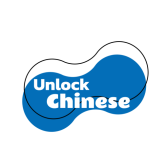成 语
Chinese Idioms
- 主题分类Thematic Categories
- 结构分类Structural Types
- 实用场景Usage Scenarios
Animal Imagery(动物意象): 如狐假虎威(A fox borrowing the tiger’s fierceness)、龙马精神(Dragon-horse vigor)
Natural Elements(自然元素):如风调雨顺(Good weather for crops)石破天惊(Earth-shattering)
Numerical Wisdom(数字哲学): 如一箭双雕(One arrow, two hawks,)十全十美(Perfect in every way)
Body Metaphors(人体隐喻):如手足情深(Close as hands and feet)心直口快(Straightheart-fastmouth)
Color Symbolism(颜色象征):青出于蓝(Blue from indigo)面红耳赤(Red-faced)
Four-Character Classics(四字经典):四字结构是成语的主流,守株待兔(Wait for windfalls)、画蛇添足(Gild the lily)
Three-Character Sayings(三字俗语):如耳边风(Like wind in ears)闭门羹(Denied entry)
Parallel Structure(对仗句式):如眼高手低(High standards but low skills)同甘共苦(Share weal and woe)
Reduplication(叠字韵律): 如兢兢业业(Cautious and diligent)熙熙攘攘(Bustling with activity)
Allusion-Based(典故缩写):叶公好龙(Lord Ye’s love of dragons)
邯郸学步(Imitate and bungle)
Business(商务谈判):互利共赢(Mutual benefit)高瞻远瞩(Visionary)
Compliments(社交赞美):才高八斗(Exceptional talented)秀外慧中(Beautiful and intelligent)
Criticism)批评:差强人意,欲速不达,Haste makes waste)
主题分类
Thematic Categories
Animal Imagery(动物意象)
Dragons and horses symbolize auspiciousness, while foxes often represent cunning, reflecting Chinese culture's anthropomorphic thinking toward animals.
Natural Elements(自然元素)
China's agrarian civilization held deep reverence for natural phenomena, frequently using nature as metaphors for societal or personal conditions.
Numerical Wisdom(数字哲学)
The number "one" signifies wholeness, while "ten" represents perfection, illustrating the symbolic interpretation of numbers in Chinese culture.
Body Metaphors(人体隐喻)
Using body parts to express abstract emotions reflects the traditional concept of "unity of body and mind" .
Color Symbolism(颜色象征)
"qīng" (青) could mean either blue or green, related to ancient dyeing techniques; red symbolizes joy and celebration but can also represent intense emotions.
结构分类
Structural Types
Four-Character Classics
90% of Chinese idioms are four-character phrases (成语), featuring compact structures and tonal rhythms (e.g., "千军万马" qiān-jūn-wàn-mǎ, where tones alternate neatly).
Three-Character Sayings
(These expressions) are highly colloquial and often carry negative connotations.
Parallel Structure(对仗句式)
The two paired words are either antithetical or complementary (e.g., "high standards" vs. "low skills"), embodying the aesthetic balance of the Chinese language.
Reduplication(叠字韵律)
Reduplicated characters enhance rhythmic cadence and typically describe states or sounds.
Allusion-Based(典故缩写)
Understanding the full典故 (allusion) is required (e.g., the story of "Lord Ye" satirizes superficial enthusiasm), making such idioms suitable for advanced learners.
实用场景
Usage Scenarios
Business(商务谈判)
In formal contexts, four-character idioms are preferred, while colloquialisms should be avoided.
Compliments(社交赞美)
For women, "xiù wài huì zhōng" (秀外慧中, "graceful and intelligent") is commonly used, whereas men are more often praised as "cái gāo bā dǒu" (才高八斗, "exceptionally talented"). Avoid terms like "lǎo dāng yì zhuàng" (老当益壮, "old but vigorous"), which may imply advanced age.
Criticism(委婉批评)
Neutral idioms can soften direct criticism—e.g., replacing "you're wrong" with "shì yǔ yuàn wéi" (事与愿违, "things go contrary to one's wishes").
